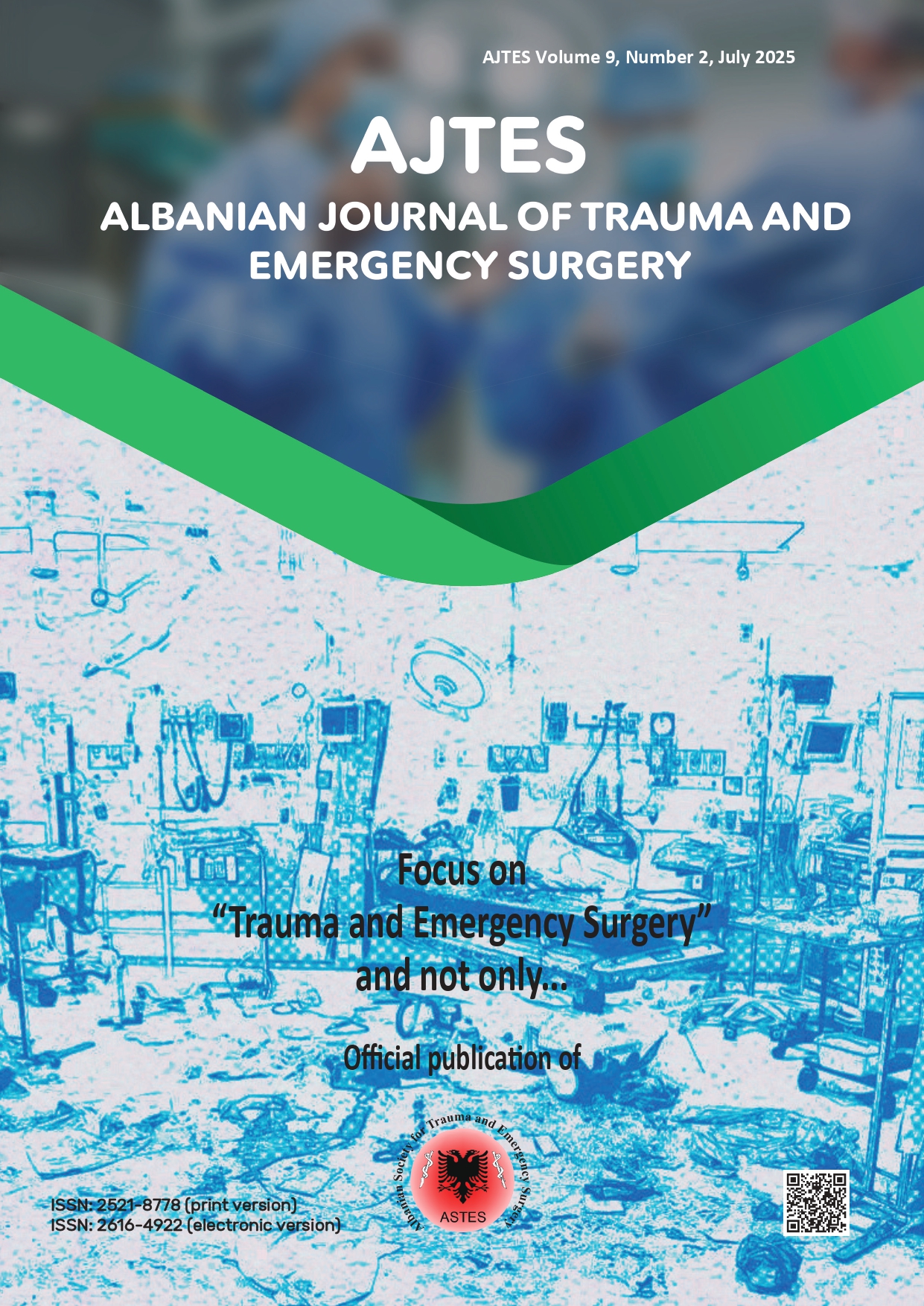Abstract
Introduction: Cardiac arrest, the sudden loss of heart function, often strikes without warning. Immediate medical intervention is not only critical, but it is also a lifeline for these patients. Without prompt action, cardiac arrest is usually fatal. Resuscitation. This study explores key factors that influence the survival of patients experiencing cardiac arrest in prehospital settings.
The primary aim of this study is to thoroughly investigate and identify the most crucial factors influencing the survival of patients experiencing cardiac arrest in pre-hospital settings.
Material and Methods: An extensive review of global and local literature focused on studies involving
patients of various age groups who underwent prehospital Resuscitation. Key factors affecting survival outcomes in prehospital cardiac arrest were tracked and analyzed.
Results: Large meta-analyses reveal that data from 37 Emergency Medical Services across Europe indicate a one-year survival rate following Cardiopulmonary Resuscitation of approximately 20.7%. From 2016 to 2023, the Emergency Medicine Center in Pristina resuscitated 576 patients, achieving an average one-year survival rate of 8.8%. Timely defibrillation of ventricular fibrillation is crucial, potentially increasing survival rates by up to 90%. However, each minute of delayed defibrillation reduces survival rates by about 10%. This highlights the crucial role of Emergency Medical Services in ensuring timely intervention. Optimal defibrillation occurs within 3 to 5 minutes after cardiac arrest. Healthcare professionals must be equipped to perform both basic and advanced cardiopulmonary resuscitation techniques to improve outcomes.
Conclusion: The success of resuscitation depends on the time elapsed between cardiac arrest and the initiation of resuscitation measures. Early intervention with basic life support techniques significantly increases the chances of survival. However, it is not solely the responsibility of professionals. The community also plays a vital role. Automated External Defibrillators (AEDs) are a safe and effective method, especially when applied promptly in cases of cardiac arrest.
References
AAOS Emergency Care and Transportation of the Sick and Injured, Series Editor: Andrew N.Pollak, MD, FAOS, Tenth Edition, Boston, Toronto, London, Singapore, ISBN 978 1449 615 871
ACLS – Advanced Cardiac Life Support Provider Handbook By Dr. Karl Disque; Satori Continuum Publishing 1810 E Sahara Ave. Suite 1507 Las Vegas, NV 89104 Printed in the United States of America, 2020 - 2025 Guidelines and Standards, Version 2023.10
Nadine Saubers, R.N. Essential First Aid, How to Safe and Healthy in Any Emergency, ISBN 978-1-4351-6545-8. New York 2021
Agron Dogjani, & Kastriot Haxhirexha. (2021). MBËSHTETJA BAZIKE JETËSORE DHE DEFIBRILIMI. In MBËSHTETJA BAZIKE JETËSORE DHE DEFIBRILIMI (p. 178). Botimet M & B. https://doi.org/10.5281/zenodo.5484293
Anđelić S. Prediktori ishoda vanhospitalne kardiopulmonalne reanimacije. Doktorska disertacija. Univerzitet u Novom Sadu, Medicinski fakultet, 2017.
Chamberlain DA, Hazinski MF. European Resuscitation Council, American Heart Association, Heart and Stroke Foundation of Canada, Australia and New Zealand Resuscitation Council, Resuscitation Council of Southern Africa, Consejo Latino-Americano de Resuscitation. Education in Resuscitation. Resuscitation. 2010; 59: 11–43.
Bajrami I.Mjekësia Emergjente Praspitalore, College of Medical Sciences, REZONANCA, Prishtinë 2016. ISBN 978-9951-880824
Bajrami I. Ndihma urgjente mjekësore, Alma Mater Europea, Campus College,, REZONANACA’’ Bartës privat i arsimit të lartë, Shtsh. Lena Graphics Design, Prishtinë, 2020. ISBN 978-9951-8968-4-9
Calle, P., Vanhaute, O., Lagaert, L., Houbrechts, H., & Buylaert, W. (1994). The 'early access' link in the chain of survival for cardiac arrest victims in Ghent, Belgium. European journal of emergency medicine : official journal of the European Society for Emergency Medicine, 1(3), 145–148.
Cummins, R. O., Eisenberg, M. S., Hallstrom, A. P., & Litwin, P. E. (1985). Survival of out-of-hospital cardiac arrest with early initiation of cardiopulmonary resuscitation. The American journal of emergency medicine, 3(2), 114–119. https://doi.org/10.1016/0735-6757(85)90032-4
Kovačević J. Prehospitali akutni zastoj srca – sistem hitne medicinske pomoći. ABC; 2014, 4 (2-3):110-15.
Key Emergency Medicine Clinical Practice Guidelines in 2017, Medscape
Stojiljković J. Urgentna medicinska pomoć sa negom. Beograd: Knjiga komerc, 2006. Rad pimljen: 11.10.2021.
Rekomandimet aktuale të Shoqatës Europiane të Kardiologjisë (ESC).https:escardio.org/Guidelines .
Meaney, P. A., Bobrow, B. J., Mancini, M. E., Christenson, J., de Caen, A. R., Bhanji, F., Abella, B. S., Kleinman, M. E., Edelson, D. P., Berg, R. A., Aufderheide, T. P., Menon, V., Leary, M., & CPR Quality Summit Investigators, the American Heart Association Emergency Cardiovascular Care Committee, and the Council on Cardiopulmonary, Critical Care, Perioperative and Resuscitation (2013). Cardiopulmonary resuscitation quality: [corrected] improving cardiac resuscitation outcomes both inside and outside the hospital: a consensus statement from the American Heart Association. Circulation, 128(4), 417–435. https://doi.org/10.1161/CIR.0b013e31829d8654

This work is licensed under a Creative Commons Attribution-NonCommercial 4.0 International License.

